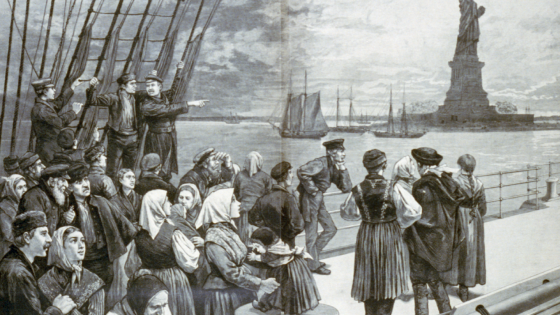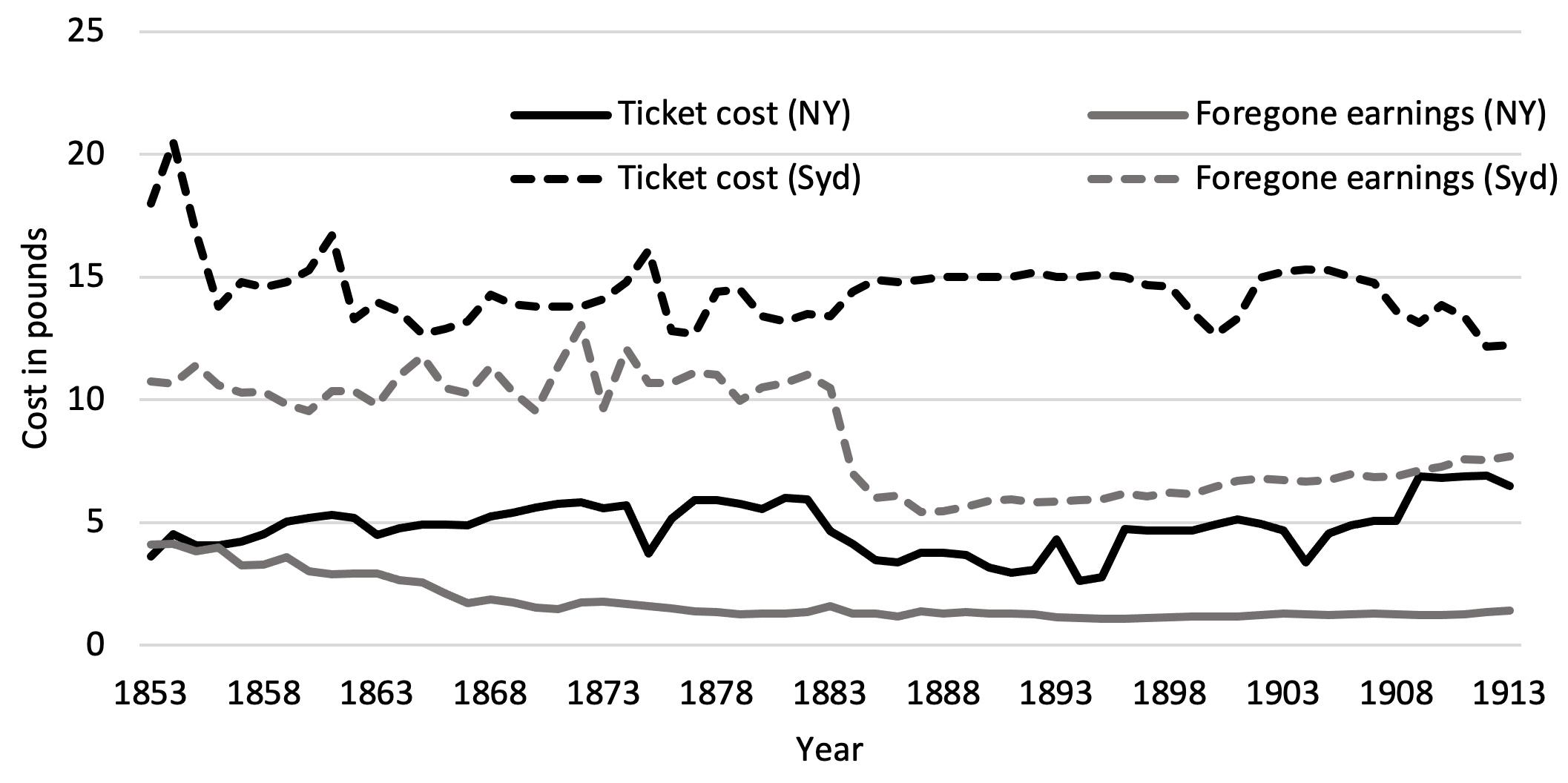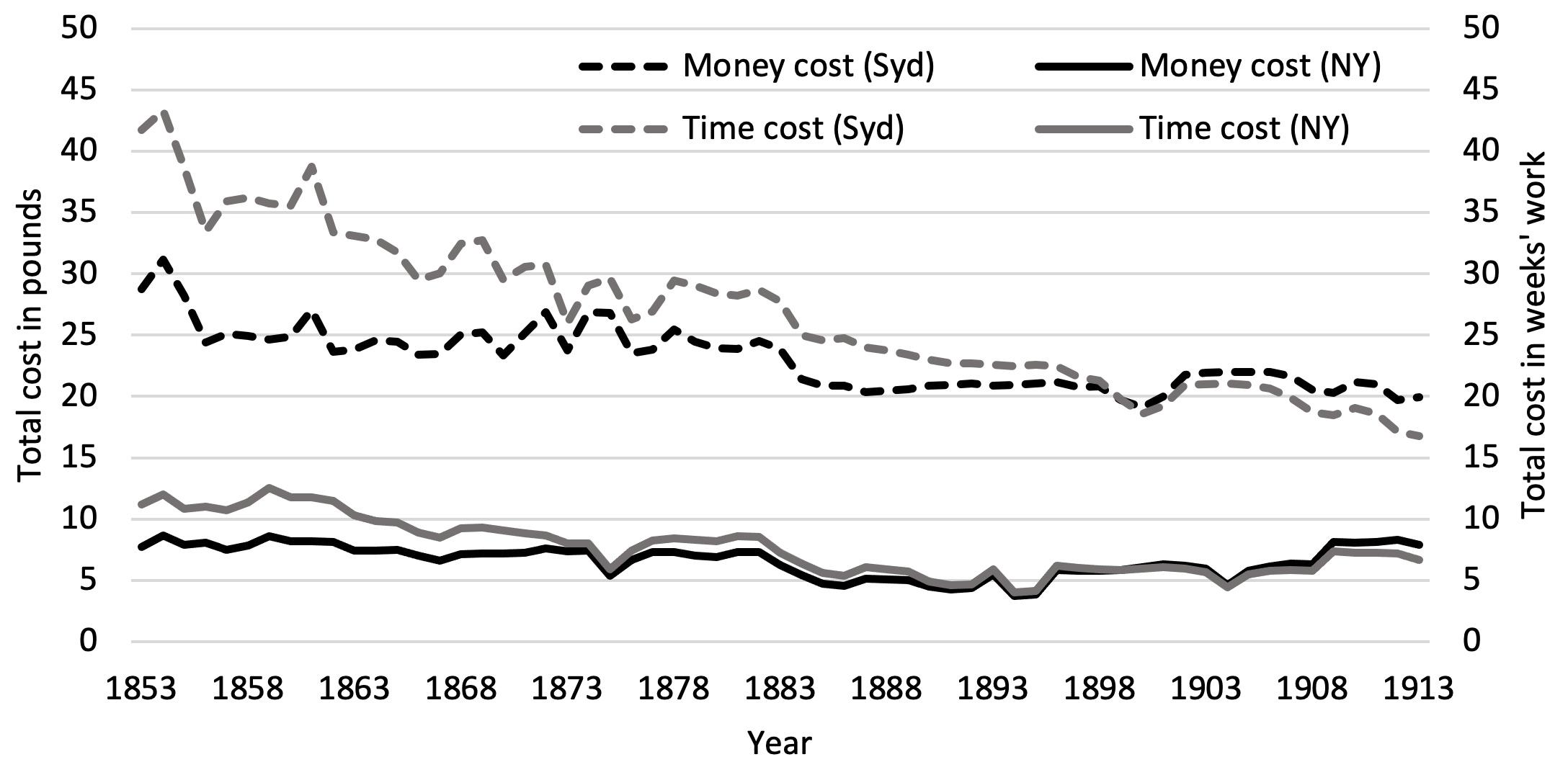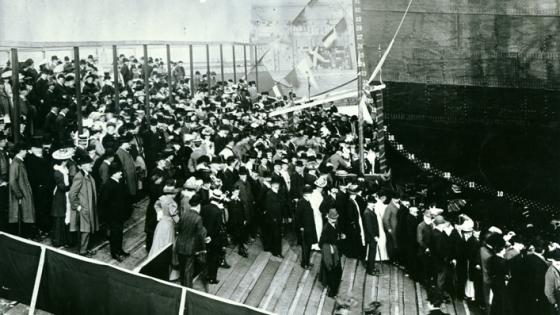In what many see as the foundation paper on the economic analysis of migration, Larry Sjaastad (1962) wrote: “The non-money considerations involved in migration are surely significant, probably far more so than the money costs. The first non-money costs to consider are opportunity costs—the earnings foregone while travelling, searching for, and learning a new job” (p. 84). Yet most of the migration literature focuses on the gains from migration, and far less on the cost. This is all the more surprising in the literature on intercontinental migration in the 19th century, when a passage often took weeks or months rather than hours or days. In this column, I provide new evidence on the decreasing length of emigrant voyages and assess its likely implications in the Age of Mass Migration.
Voyage durations of emigrant ships
One reason that the opportunity cost of time on the crossing has been neglected is the lack of comprehensive series of average voyage durations. A new index of average voyage time for emigrant ships from Liverpool to New York is graphed in Figure 1. From 1853-57 to 1909-13, the average voyage fell from 38 days to just eight – a fall of 79%. This dramatic decline was concentrated in the 1860s as emigrant sailing ships were gradually supplanted by the improving steamship technology. A reason that the gains were so large is that sailing ships had to battle against strong southwesterly winds and Gulf Stream currents. Not only were steamships faster against the wind, but they could also avoid the more circuitous routes taken by sailing ships seeking the most favourable winds.
Figure 1 Crossing times of emigrant ships from Liverpool to New York, 1853–1913
Source: Hatton (2023a).
Perhaps even more striking is the fall in sailing times from the UK to Australia, shown in Figure 2. In 1837-41 the voyage took an average of four months, falling to 46 days in 1909-13. Compared with the voyage to New York from 1853-57 to 1909-13, time on the voyage to Sydney fell by more in absolute terms (59 days versus 30 days), but by less in relative terms (56% versus 79%). Up to 1880, voyage times on the route to the antipodes fell as larger, clipper-style iron-hulled sailing ships exploited the great circle route around the Cape of Good Hope, following the northeasterly trade winds of the South Atlantic before descending into the strong westerlies of the roaring forties carrying them east to Australia.
As Figure 2 also illustrates, the transition from sail to steam for the bulk of emigrants travelling steerage to Australia did not occur until the early 1880s. The costs of steam were higher and the long distances between coaling stations meant less room for passengers and freight – disadvantages that were only overcome with the increased efficiency of ships with triple-expansion steam engines and screw propellers. Sail even outlasted the opening of the Suez Canal in 1869, partly because the canal reduced the distance to the ports of southern Australia only modestly, and partly because of the heavy canal tolls charged on tonnage and passengers. Indeed, as late as 1909-13, half of the emigrant traffic, by this time all by steam, still sailed around the Cape.
Figure 2 Voyage durations of emigrant ships from UK ports to Sydney from 1837 to 1913
Source: Hatton (2023b).
Ticket prices and foregone earnings costs
How did foregone earnings on these voyages compare with the price of a ticket? Figure 3 presents new indices of the price of a ticket in steerage (for cabin fares see Dupont and Weiss 2016) and the foregone earnings cost measured as weeks on the voyage multiplied by UK average weekly earnings. The foregone earnings cost of a passage to New York fell from about equal to the price of a ticket in the early 1850s to less than one-fifth of the price in the early 1910s. On average, the price of a ticket to Australia cost three times that of an Atlantic crossing. The foregone earnings on the voyage to Australia were about two-thirds of the ticket price in the 1850s and this fell sharply in the 1880s but was still more than half the ticket price in the 1910s.
Figure 3 Ticket cost and foregone earnings cost on emigrant routes from the UK to New York and Sydney, 1853-1913
Source: Hatton (2023b).
Ocean freights rates fell by about half between 1950 and 1913 (Jacks and Stuermer 2021) and the transition from sail to steam substantially boosted world trade (Pascali 2017). But over these six decades, the fall in the price of an emigrant ticket to the US increased slightly while the price to Australia fell slightly. So voyage costs are unlikely to have contributed much to the Age of Mass Migration unless we take into account foregone earnings. But while freight rates are the key cost for merchandise trade, time is much more important for human cargo.
Figure 4 shows the trends in costs when foregone earnings are added to the ticket price (in nominal pounds). For the Atlantic crossing (darker solid line, left scale) this ‘total’ cost falls from around £8 in the mid-1850s to an average of £6 in the two decades from the mid-1880s before returning to around £8 at the end of the period (partly due to increases in the US head tax). For voyages to Australia (darker hatched line, left scale), after a sharp fall in the early 1850s, the ‘total’ cost falls from £25 to around £20 by 1913.
Figure 4 Cost of the ticket plus foregone earnings in money and time equivalent
Source: Hatton (2023b).
To focus on the affordability of passages to ordinary emigrants in the Age of Mass Migration, it is useful to express these costs in terms of the number of weeks work at average UK earnings. In these terms, Figure 4 shows that the cost of a voyage to the US (lighter solid line, right scale) fell from 11 weeks of work in the early 1850s to 7 weeks in 1913. The time cost of a voyage to Australia (lighter dashed line, right scale) falls more steeply, from 36 weeks of work in the late 1850s to 17 weeks in 1813. In this light, it is not surprising that, up to 1880, most migrants to Australia travelled on heavily subsidised passages.
Did costs influence mass migration?
A few existing studies have suggested that ticket prices are negatively related to the number of transatlantic migrants in the nineteenth century (Sánchez-Alonso 2000, Deltas et al. 2008, Hatton 2021), but none have taken the time costs into account. The effects of these costs are assessed in regressions of annual UK emigration from 1855 to 1913 to three destinations, the US, Canada and Australia/New Zealand. The results indicate that both the ticket price and the time cost are significantly negatively associated with these emigration streams, and especially when measured in weeks of work (Hatton 2023b).
By the 1850s, these intercontinental emigration streams from the UK were well established and most of the boom in mass migration after 1880 was accounted for by migrants from Southern and Eastern Europe. With fewer earlier emigrants sending pre-paid tickets, the cost of migration may have loomed larger in the decision to emigrate. It is worth stressing also that the combined cost of a ticket and foregone earnings would have been only a part, possibly around half, of the full cost. As Sjaastad noted, time spent both before and after the ocean voyage also mattered, not to mention the costs of overland travel and subsistence. Overland travel, notably by railway, was also becoming faster and cheaper (Leunig 2006) and this likely added a further boost to mass migration.
References
Deltas, G, R Sicotte and P Tomczak (2008), “Passenger Shipping Cartels and their Effect on Transatlantic Migration”, Review of Economics and Statistics 90(1): 119-33.
Hatton, T J (2021), “Emigration from the United Kingdom to the United States, Canada and Australia/New Zealand, 1870–1913: Quantity and Quality”, Australian Economic History Review 61(2): 136-158.
Hatton, T J (2023a), “Time on the Crossing: Emigrant Voyages Across the Atlantic, 1853 to 1913”, CEPR Discussion Paper No. 18253.
Hatton, T. J. (2023b), “Emigrant Voyages from the UK to North America and Australasia, 1853-1913”, CEPR Discussion Paper No. 18268.
Leunig, T (2006), “Time is Money: A Re-Assessment of the Passenger Social Savings from Victorian British Railways”, Journal of Economic History 66(3): 635-673.
Pascali, L (2017), “The Wind of Change: Maritime Technology, Trade, and Economic Development”, American Economic Review 107(9): 2821–2854.
Sánchez-Alonso, B (2000), “European Emigration in the Late Nineteenth Century: The Paradoxical Case of Spain”, Economic History Review 53(2): 309–330.
Sjaastad, L A (1962), “The Costs and Returns of Human Migration,” Journal of Political Economy 70(5-2): 80-93.
Stuermer, M and D Jacks (2021), “Bulking up: Booms and Busts in Maritime Transport Costs and their Drivers”, VoxEU.org, 18 April.
Weiss, T and B Dupont (2016), “The Transportation Revolution in the North Atlantic: Evidence from Passenger Fares”, VoxEU.org, 6 November.







